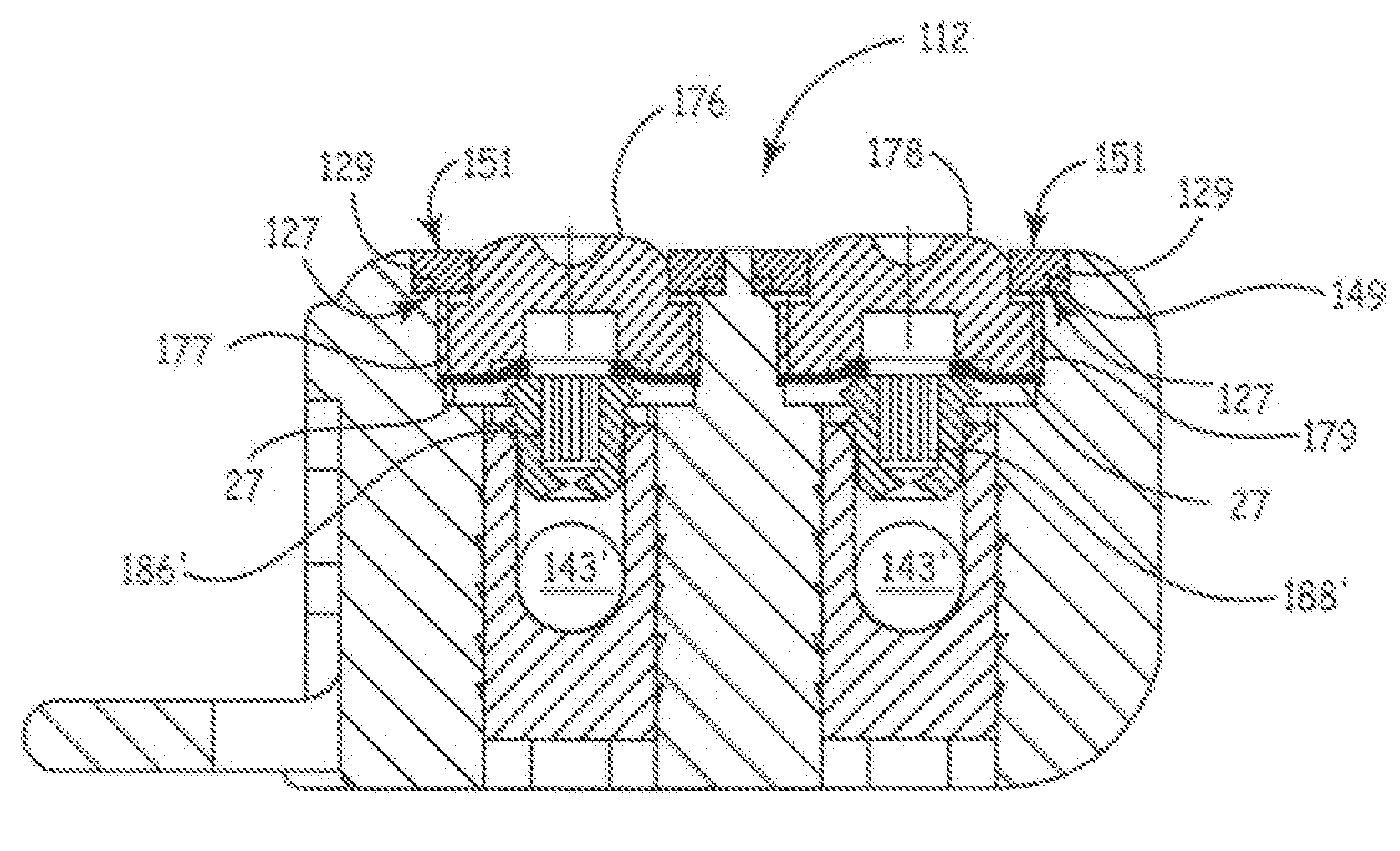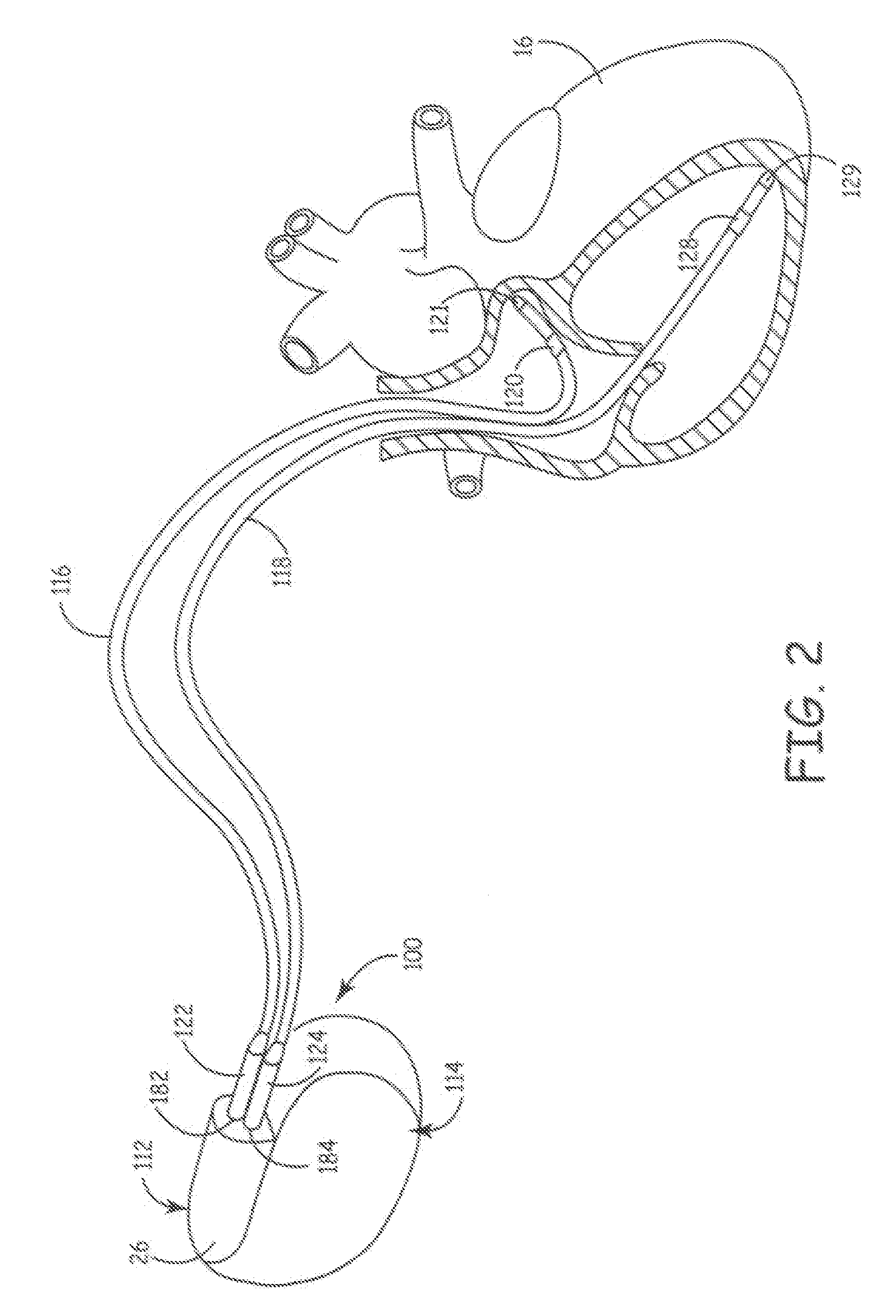Ultrasonically welded, staked or swaged components in an implantable medical device
- Summary
- Abstract
- Description
- Claims
- Application Information
AI Technical Summary
Benefits of technology
Problems solved by technology
Method used
Image
Examples
Embodiment Construction
[0051]The preferred embodiments of the present invention relate to ultrasonic means for attaching or securing various components inside a pre-formed header module to thereby form a hermetically sealed enclosure. Implantable medical devices where the present invention finds application include implantable drug dispensers, IPGs (including cardiac pacemakers, pacemaker-cardioverter-defibrillators, nerve, muscle and neurological stimulators, cardiomyostimulators, etc.), implantable cardiac signal monitors and recorders and the like. Virtually all MEDTRONIC® electronic IMDs that require attachment of a hermetically sealed power supply and circuitry to an interchangeable catheter or electrical lead employ a general configuration of a hermetically sealed enclosure in conjunction with a pre-formed header module.
[0052]FIG. 1 is a simplified schematic view of an IMD 100 embodying the present invention, where an improved pre-formed header module 112 is attached to a hermetically sealed enclosu...
PUM
 Login to View More
Login to View More Abstract
Description
Claims
Application Information
 Login to View More
Login to View More - R&D Engineer
- R&D Manager
- IP Professional
- Industry Leading Data Capabilities
- Powerful AI technology
- Patent DNA Extraction
Browse by: Latest US Patents, China's latest patents, Technical Efficacy Thesaurus, Application Domain, Technology Topic, Popular Technical Reports.
© 2024 PatSnap. All rights reserved.Legal|Privacy policy|Modern Slavery Act Transparency Statement|Sitemap|About US| Contact US: help@patsnap.com










